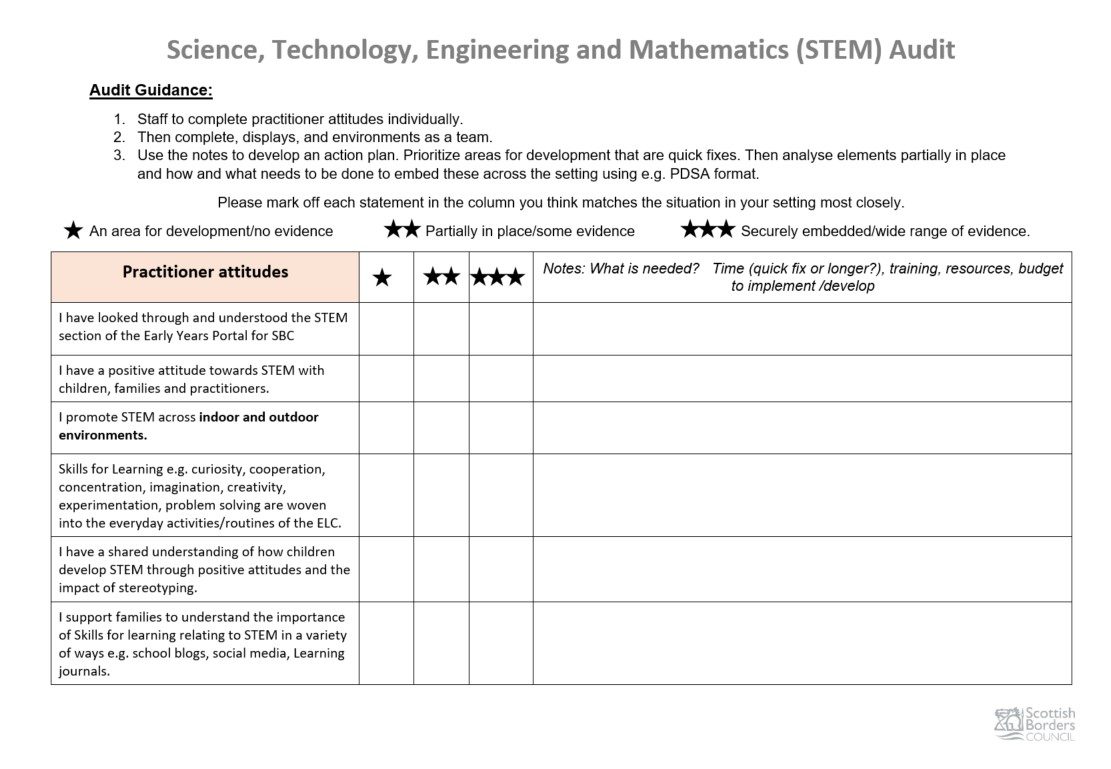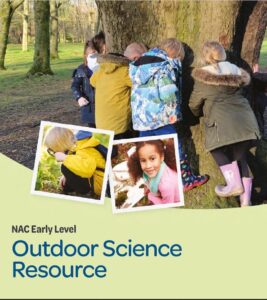![]()
Science, Technology, Engineering & Mathematics (STEM)
Resources
What is it?
“STEM is an approach to learning and development that integrates the areas of science, technology, engineering and mathematics.”
(Department of Education, Western Australia)
“STEM stands for Science, Technology, Engineering and Mathematics. We include numeracy and digital skills within our definition of STEM. Both of these are vital to enable everyone to participate successfully in society as well as across all jobs, careers and occupations. STEM education and training seeks not only to develop expertise and capability in each individual field but also to develop the ability and skills to work across disciplines through interdisciplinary learning. STEM education and training helps us acquire the following skills and capabilities:
- growing our understanding and appreciation of the natural and physical world and the broader universe around us;
- interpreting and analysing data and information;
- research and critical enquiry – to develop and test ideas;
- problem solving and risk assessment;
- experimentation, exploration and discovery of new knowledge, ideas and products;
- collaboration and working across fields and disciplines; and
- creativity and innovation – to develop new products and approaches;
All of these are increasingly important to success in a changing and technologically-driven world. They are also important for helping us to develop as active citizens, making informed decisions for ourselves and for society.”
STEM, Strategy for Education and Training in Scotland, Second Annual Report, Scottish Government, 2020, p 46
“Children are curious about the environments surrounding them, even before they are born. They want to know how things work and can use problem solving skills from an early age. Children constantly explore cause and effect through their play.”
Realising the Ambition, 2020, p70
Key messages:
An Early Level setting which provides a rich quality learning environment with experienced, sensitive practitioners will already be supporting the development of STEM skills and capabilities through everyday play and interactions.
The Setting:
- Skills for Learning, e.g. curiosity, co-operation, concentration, imagination, creativity, experimentation, problem-solving are woven into the everyday activities and routines.
- Encourage and promote positive perceptions of STEM, e.g. by developing links with positive role-models from the local community, e.g. parents who are doctors, dentists, scientists, engineers etc.
- Has a shared understanding of how children develop STEM skills and capabilities through positive attitudes and acknowledging the possible impact of stereotyping.
- Shares the importance of the development of STEM skills and capabilities with children and families.
- Promotes STEM across all indoor and outdoor environments.
- Weaves STEM skills and capabilities into everyday activities and routines.
Practitioner attitudes:
- Are supportive and know when to engage and when to stand back to let children investigate and explore on their own, with others and when to help through provision of knowledge and/or resources indoors, outdoors and beyond the gates.
- Need to consider bias towards gender and challenge gender stereotypes, to achieve equity for all.
- Are knowledgeable. They understand, notice, respond to, plan for and facilitate STEM opportunities within play.
- Use the language of STEM with the children, e.g. building, constructing, engineering, exploring, measuring, analysing, creating, electronics, computers etc.
- Use observation and planning to support a progressive approach to STEM learning opportunities.
- Offer STEM opportunities which promote curiosity, independence and higher-order thinking.
- Use digital technologies to explore and maximise STEM learning opportunities.
- Use approaches to support and encourage personal achievement across STEM which are well considered and actioned.
- Use literacy and numeracy opportunities which are meaningfully integrated within STEM experiences.
- Create opportunities for individuals to engage with STEM opportunities and these are reflected in documentation of learning.
- Documentation of learning in STEM is monitored to ensure equity of experience, opportunity and individual progression.
- Actively ‘look outwards’ to find and use examples of good STEM practice and engage with training offers.
Enabling Environments:
- A well-considered audit of resources develops accessibility and leads to an increasing range of potential experiences.
- STEM opportunities are both responsive and intentional, developmentally appropriate and engaging.
- All children have equal opportunities to take part in all experiences and are encouraged to access all areas of the curriculum.
- Resources are well-organised so that children can access them and put them back in their places independently.
- A rich supply of open-ended resources are available which allow gender-bias free play, e.g. loose parts, block play, small world, cardboard boxes etc.
- Provision is added to sensitively to support the extension of the children’s possible ideas and plans, in line with their interests.
- Facilitated free-flow access to the outside.
- Children are supported to learn about the different jobs that people do and challenge gender bias when it occurs through their play.
- Planning regular opportunities Beyond the Gates.
Ways that we can support the development of STEM skills and capabilities within our settings:
Growing our understanding and appreciation of the natural and physical world and the broader universe around us:
Supporting the children to become aware of the world around them and the importance of respecting living things and the environment. Of managing the Earth’s resources responsibly and being aware of sustainability, e.g. developing a pond area where they can study creatures and plants and learn about how they depend upon each other or the concepts of reduce, reuse and recycle are explored and discussed and referred to meaningfully through everyday practice within the setting.
Make good use of the natural environment for children to explore and get to understand the world around them using their senses, e.g. noticing the change in weather and seasons, planting seeds to grow: vegetables, salads, flowers to be used in the setting.
Ask children to investigate how things are made and why things work, making good use of tools and equipment, e.g. exploring how things work and taking them apart by providing real tools and resources to deconstruct, e.g. old tv/radio etc.
Interpreting and analysing data and information:
Encourage children to recognise similarities, patterns and differences in the world around them, e.g. trees, patterns on clothes, eyes, in books, flowers etc.
Through development of provocations promote sorting and matching. Make use of natural loose parts and the children themselves, e.g. tallest/shortest or eye/hair colour. Get children to consider how they could record the information – make use of photographs, diagrams, charts, pictograms.
Make good use of ordering, numbering, counting, sharing, and sorting in everyday routines within the setting, e.g. Self-registration – How many children are here today? / How many are not here? Snack time/lunch – What are children having to eat? etc.
Researching and use of critical enquiry – to develop and test ideas:
Encourage the children to remember what they had done before in similar situations to overcome issues or to problem solve to inform their thinking and work out how they might improve or develop an idea.
Encourage children to be problem solvers, ask the questions, propose the ideas, generating and testing solutions, and making decisions to understand how to refine ideas further (Sustained Shared Thinking).
Make use of Bee-Bots, or other “tech toys” to develop thinking around directions, planning, sequencing, pattern spotting skills.
Problem solving and risk assessing;
Pose questions, supporting children to wonder and be curious, observing, exploring and problem-solving to find out more.
Encourage and support children to be hands on, practical, trying things out, for example: measuring when baking and using simple equipment and non-standard unit and making simple predictions: asking questions such as “ I wonder what…?” “What do you think might….?”
Support children to develop their understanding of risks and benefits and how to take appropriate steps to protect oneself and others.
Discuss with the children how they plan and organise what they are doing to show them the importance of why we do this, e.g. going on a trip.
Experimentation, exploration and discovery of new knowledge, ideas and products:
Encourage children to try things out to see if they work. In STEM, mistakes and failed attempts must be seen as positive experiences, allowing opportunities for deeper learning.
Support children to demonstrate their reasoning skills by explaining their choices and decisions.
Ensure that all children have regular opportunities to work with ‘food’ in different contexts, e.g. preparing snack: cutting, slicing, weighing, mixing, playing in the mud kitchen and with playdough.
Encourage the children to search for information to find about new things, e.g. using books and IPads
Collaboration and working across fields and disciplines:
Support children to work together, big challenges are rarely solved by individuals. Working on STEM problems also involves learning to work as a integral part of a collaborative team.
Encourage children to discuss their ideas and plans, working out with peers why one idea may be better than another.
Support children to effectively communicate with their peers, enabling them to collaborate and present to others.
Creativity and innovation – to develop new products and approaches:
Encourage children to be critical thinkers who are creative, analysing information, evaluating designs, reflecting on their thinking, working out their thoughts and ideas, and coming up with creative innovative solutions.
Support children to think creatively, to have the ability to look at and propose solutions to a problem through various approaches, including ones that are highly creative or “out-of-the-box.”
Provide open-ended resources in various sizes, shapes, colours, textures for the children to be creative, with all practitioners understanding the importance of process over product, celebrating children’s individuality.
Provide opportunities for den building, creating structures like bridges where the children can experiment with testing, adapting and refining their creations.
For more ideas see STEM audit and links below
Linked Areas of Practice
Block Play
Creativity
Digital Technology
Gender Equality
Loose Parts
Mathematics & Numeracy
Spaces
STEM – Engineering
STEM – Science
STEM – Technologies


